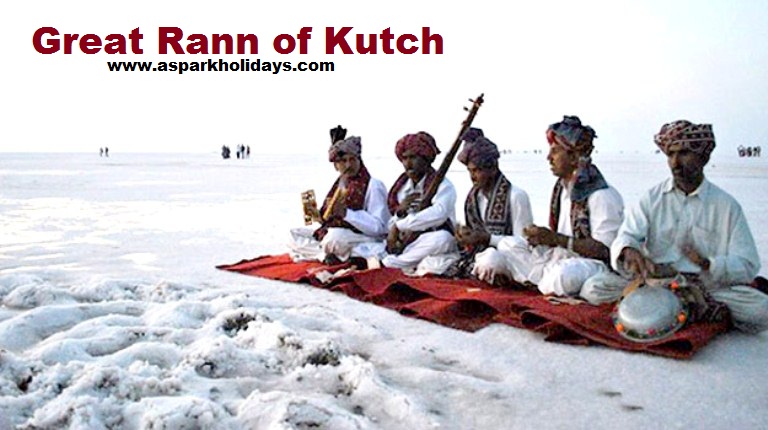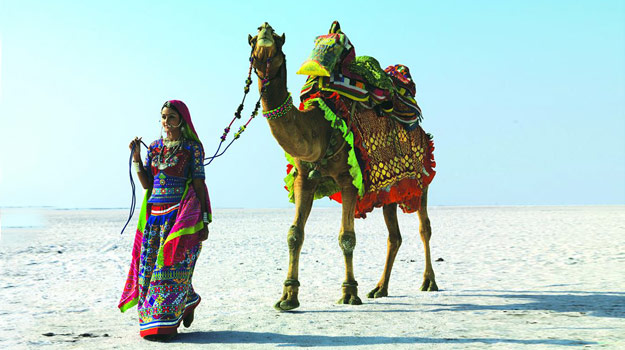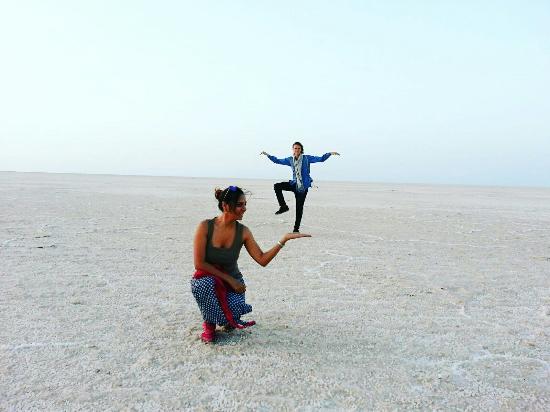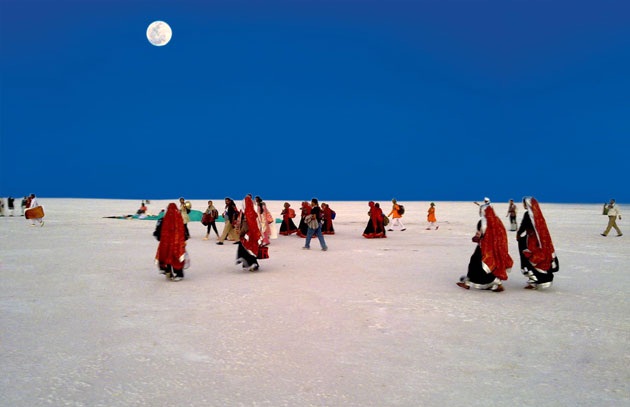
Where is it Located- The vast and arid expanse that is the Great Rann of Kutch lies to the north of the Tropic of Cancer, at the top of the Kutch district. It's best approached via Bhuj. Dhordo, approximately 1.5 hours north of Bhuj, is being developed by the Gujarat government as the Gateway to the Rann. Dhordo is on the edge of the salt desert. It's most convenient to stay there, or nearby Hodka.
When to Go- The Rann of Kutch begins to dry up in October every year, steadily transforming into the desolate and surreal salt desert. The tourist season runs until March, and the above mentioned accommodations close at the end of March. If you want to avoid the crowds and have a more peaceful experience, go at the end of the tourist season in March. You can still visit the salt desert in April and May though, on a day trip from Bhuj. However, it's very hot during the day. Plus, there's an absence of basic facilities for tourists (food, water and toilets). You'll pretty much have the salt desert to yourself though!
It's best to head out into the desert only in the early morning or evening, otherwise the salt can be blinding. You can take a moonlight camel safari into the desert. The full moon is the most magical time of month to experience it.
The Rann Utsav- Gujarat Tourism holds a Rann Ustav festival, which begins at the start of November and extends until the end of February. A tent city with hundreds of luxury tents is set up near the Gateway to Rann Resort at Dhordo for visitors, along with rows of food and handicraft stalls.
The package price includes sightseeing trips to surrounding attractions. Activities offered included camel cart rides, ATV rides, para motoring, rifle shooting, kids' entertainment zone, spa treatments, and cultural shows. Unfortunately, the festival has become increasingly commercialized in recent years, which has resulted in pollution and garbage in the area.
Permits for Visiting the Rann of Kutch- The Rann of Kutch is a sensitive area, due to its proximity to the Pakistani border. Therefore, written permission is required to visit the salt desert. This can be obtained on the way at the Bhirandiyara village (famous for mawa, a sweet made from milk) checkpoint, around 55 kilometres from Bhuj. The cost is 100 rupees per person and 50 rupees for a car. You'll need to submit a photocopy of your ID, plus show the original.
Permission is also obtainable from the Gujarat Police DSP office in Bhuj near Jubilee Ground (it's closed Sundays, and every second and fourth Saturday). You must present the written permission to the officers at the army checkpoint at the entry to the salt desert.
How to Get There- The resorts mentioned above will arrange transport for you from Bhuj. There are a couple of ways of getting to Bhuj.
- If taking a train, it's most convenient from Mumbai (15 hours).
- Flights to Bhuj are also available from Mumbai. Compare Flights to Bhuj and Save.
- Buses to Bhuj are available from many places in and around Gujarat, and the road is in good condition.
Other Ways to See the Rann of Kutch- If you want to see the Rann of Kutch from a different perspective, Kala Dungar (Black Hill) offers a panoramic view from 458 meters above sea level. You can see all the way across to the Pakistani border. Kala Dungar is accessible via the village of Khavda, which is 25 kilometres away, and around 70 kilometres from Bhuj. This village is home to artisans who specialize in block printing, including ajrakh block printing from Pakistan. It's best to take your own transport as public transport is infrequent. The old Lakhpat Fort (140 kilometers from Bhuj) also provides a fabulous view of the Rann of Kutch.
Need Aspark Help?
For Tour Packages, Vehicle Rental and Customer Care Support.
+91 9999 31 7846
booking@asparkholidays.comWhy Travel with Us?

Excellent Support
Our Team Available 24x7 for Customer support
Best Price & Savings
We Offer the Most Competitive Prices.



